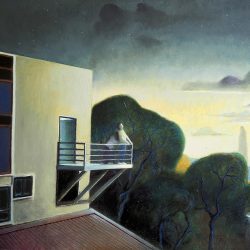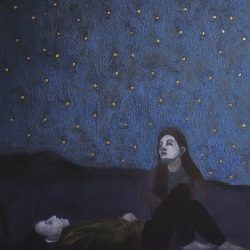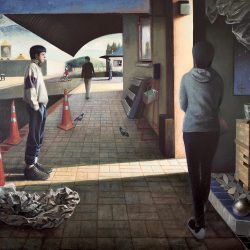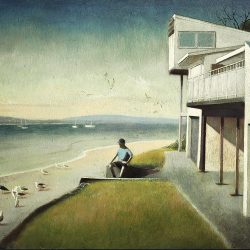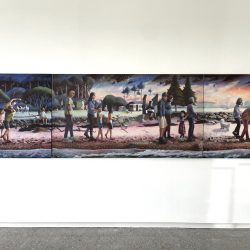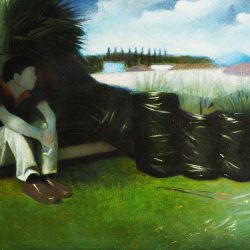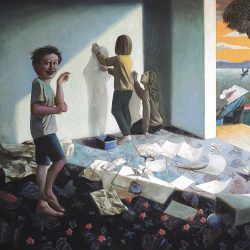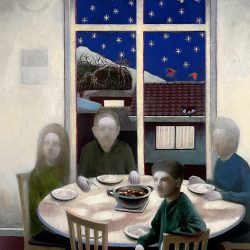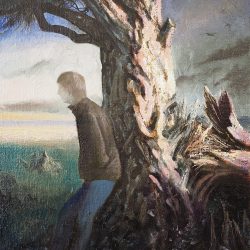Gavin Chai | Strange Paradise
Strange Paradise is a new series of atmospheric exterior paintings which capture elements of domestic life. Chai’s paintings evoke a sense of introspection, capturing the essence of the human condition and the impact of the modern world on individuals.
Despite their often stark realism, Chai’s masterful paintings have a an eerie sense of the surreal, inviting viewers to contemplate the themes of alienation and our longing for connection & meaning.
Chai’s compositions typically depict isolated or solitary figures in the landscape. Their formal arrangement and mood, make stylistic connections to the theatrical arrangements of the Flemish and Renaissance painters. Chai’s employment of traditional painting techniques – even to the point of making his own paint from powdered pigments and linseed oil – show an accomplished use of light, composition, and colour.
Figures in several of paintings are stylised and faceless, emphasizing their anonymity and perhaps a sense of alienation. They are typically passive, depicted in contemplation, further enhancing the enigmatic quality of his works. In other paintings we see characters with more clarity and harmony with in their environment. This is perhaps most notable in Beach People, Chai’s largest work to date, composed of three linen canvases, depicting the trajectory and relentless cycle of life. In this respect the painting acts as a tableaux of collective experience; celebrating both the ordinary and mysterious relationships between people, place, memory and time.
Chai created the composition through a musical structure with a prelude, main body, and a final da capo (meaning ‘from the beginning’. In the left hand panel (prelude) we see life unfolding in an Edenic like garden with a certain allegro and the vigour of youth. The forest in the background is dense and abundant, suggestive of a time before mass-deforestation and environmental deterioration. Heading east from Eden, second panel: andante (moderate tempo) reveals period of maturity where life becomes complex, abstracted – and youth & innocence something increasingly out of reach. The final panel (da capo) is the most colourful of the three. Despite an obvious end looming in the final act, it climatically it accelerates into presto (a fast tempo) where a rebirth of life is set into place. Are we arriving at the end, or merely the beginning of something different?
Chai’s attention to light, shadow, along with the play of textures and detailed brush, adds to an overall sense of mystery and serenity. Evocative lighting is a prominent feature of this series, often conveying a sense of hope, as if to offer small glimpses of utopian dreams and divine intervention. In Strangers we see an intense shaft of light break through the alleyway, fondly bathing the pavement and embracing the figure paused in contemplation. This almost celestial like glow interprets the flow the painting, and perhaps offers an interpretive clue to the objects and happenings distributed across the work – challenging the viewer to build or question connections.
In this new series of works, we are being asked to look past reality a we perceive it, to think about the subtle presence the sacred – simple aspects of our experience and relationships – which seen to evoke a sense of the sublime. In the end, nothing is more abstracted than reality. We are all strangers in the paradise we call home, and amidst a world replete with imperfections, we look to those moments which transcend the ordinary.
